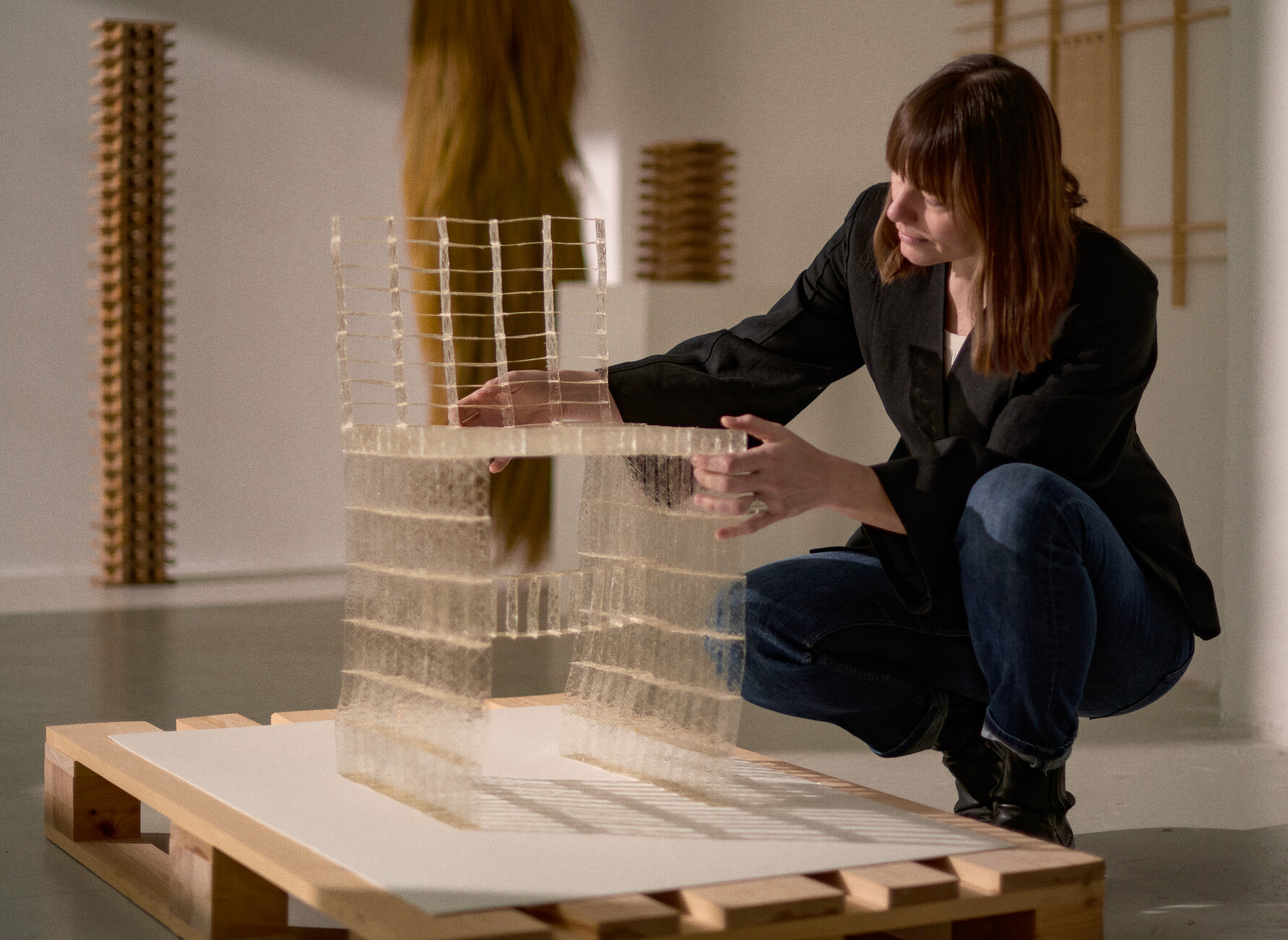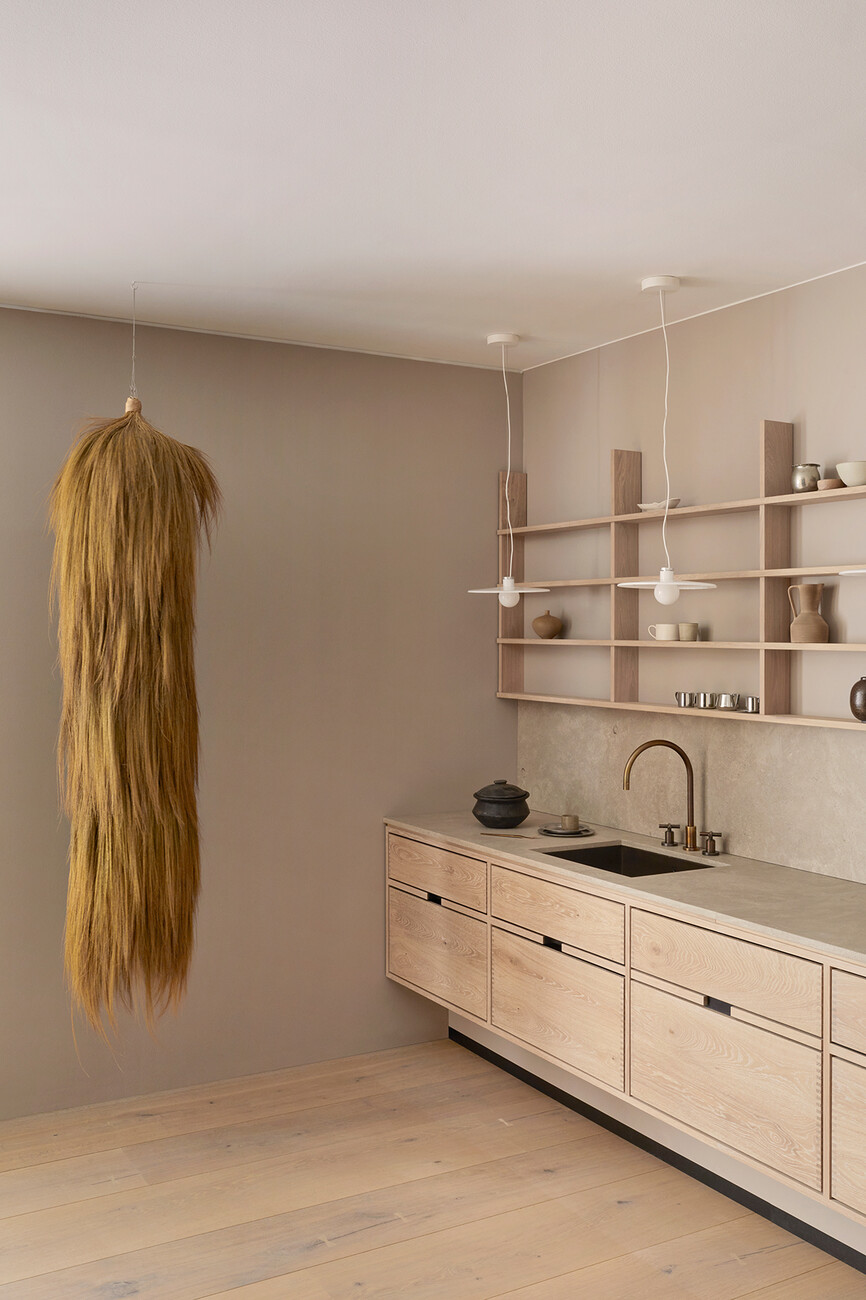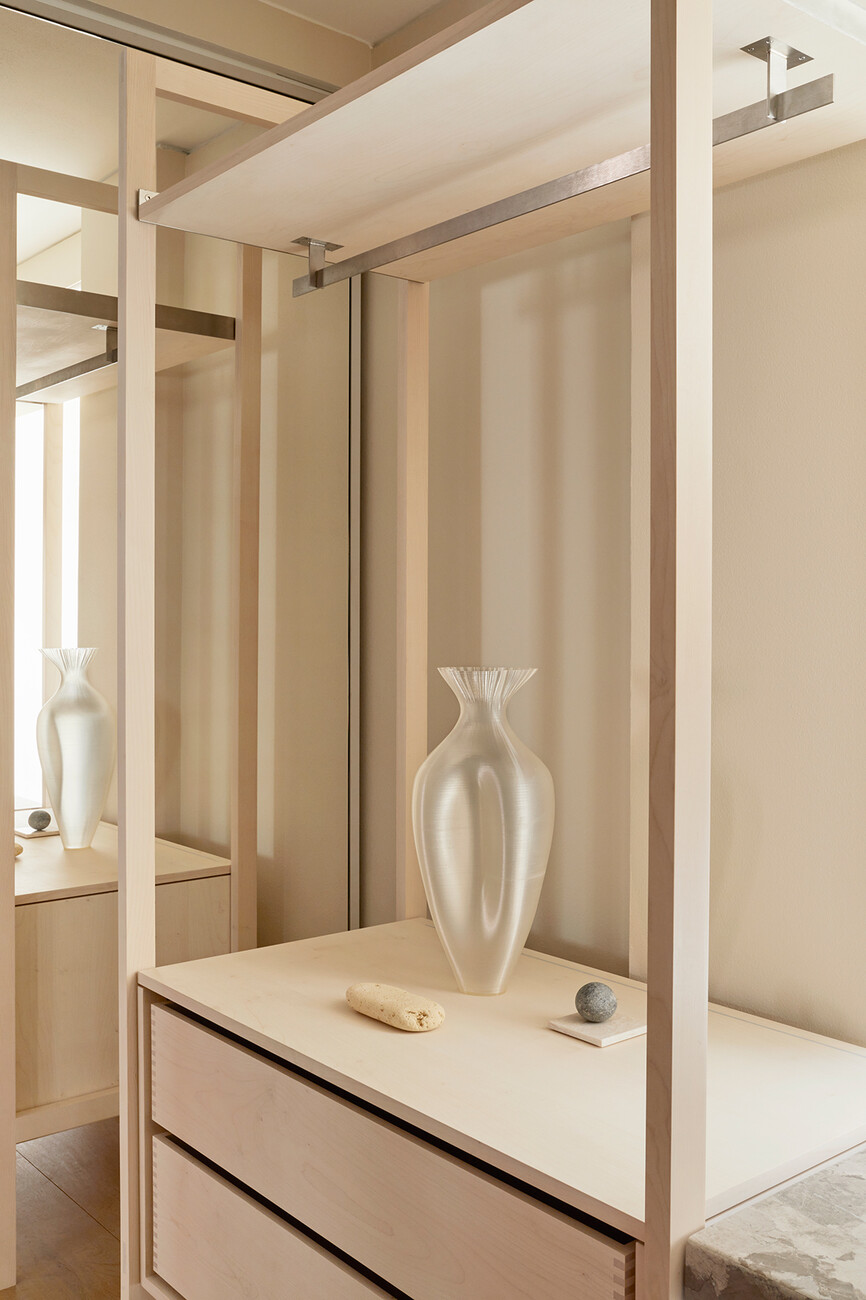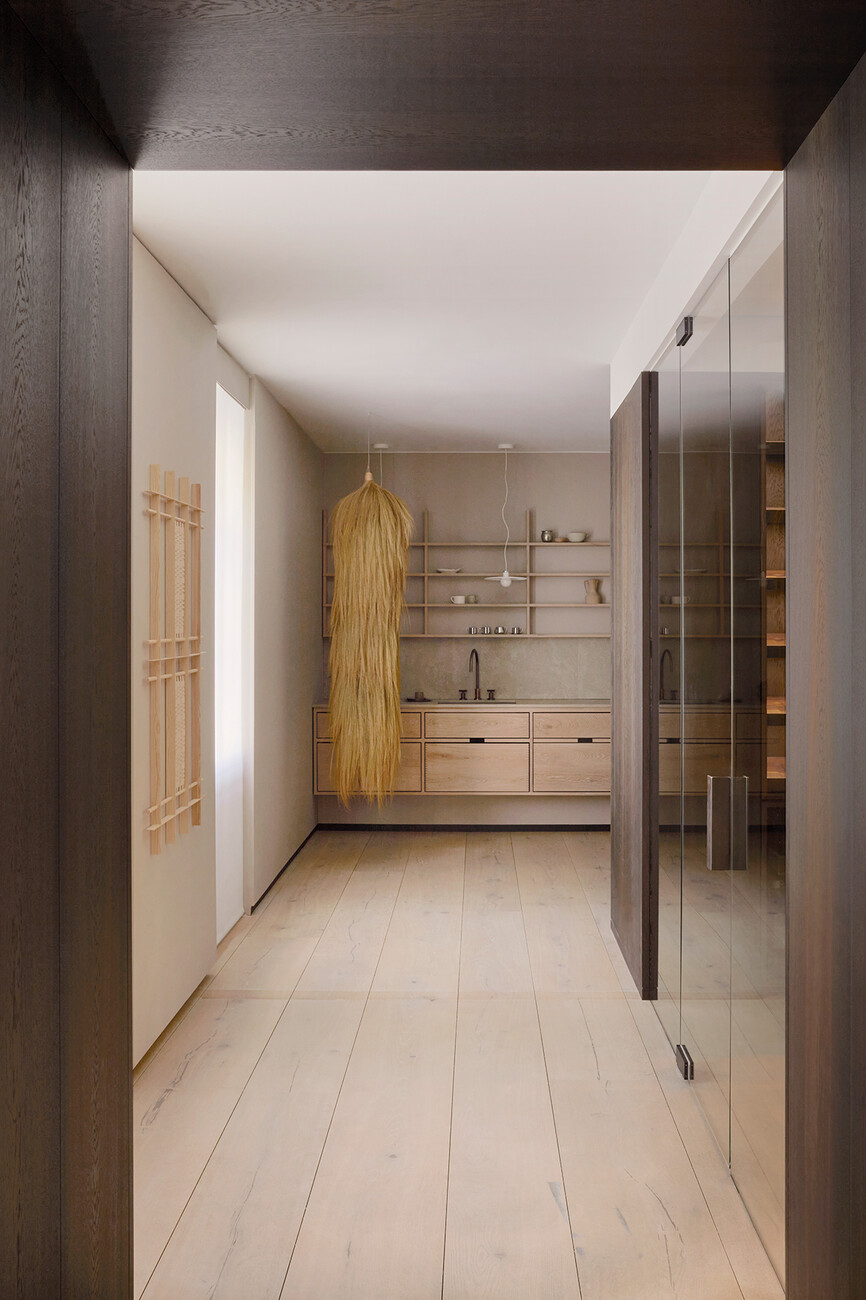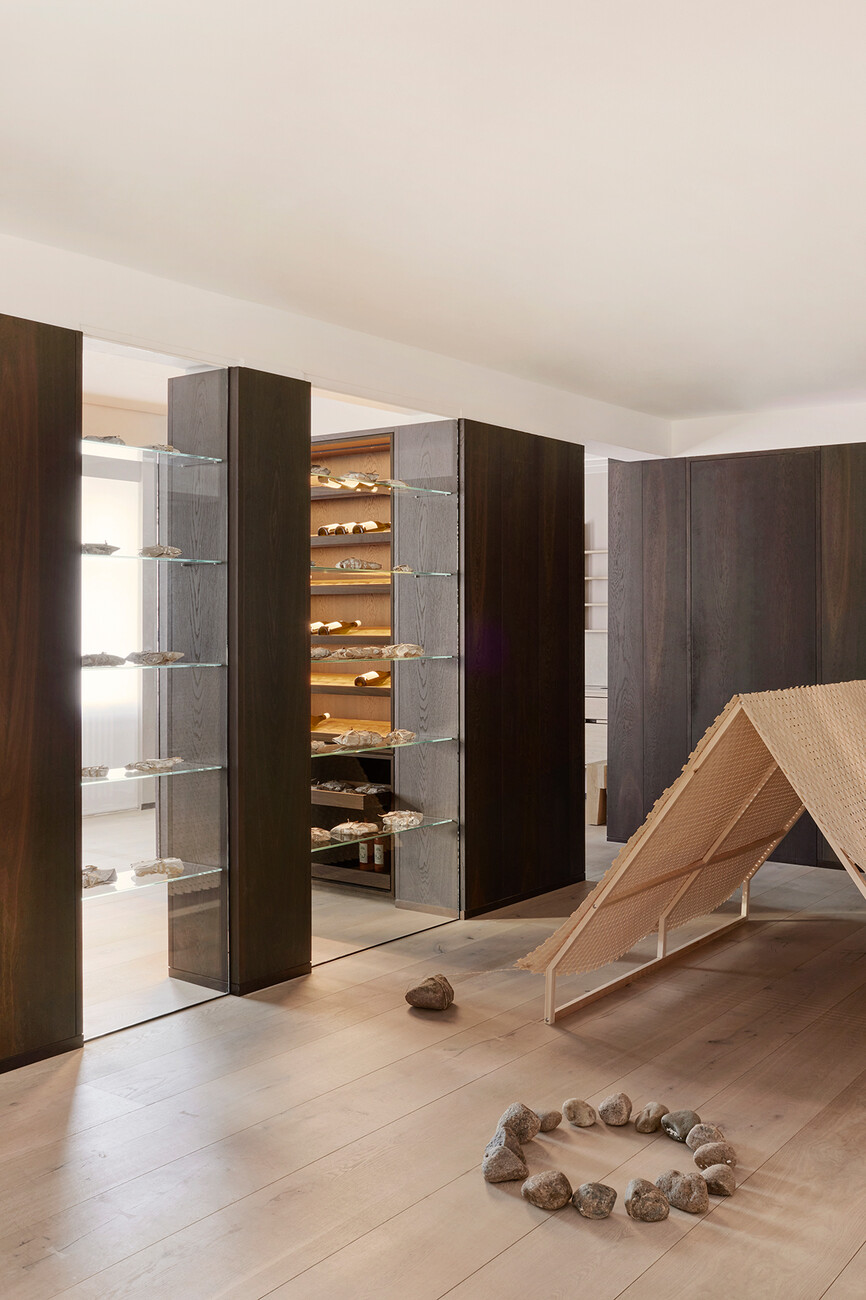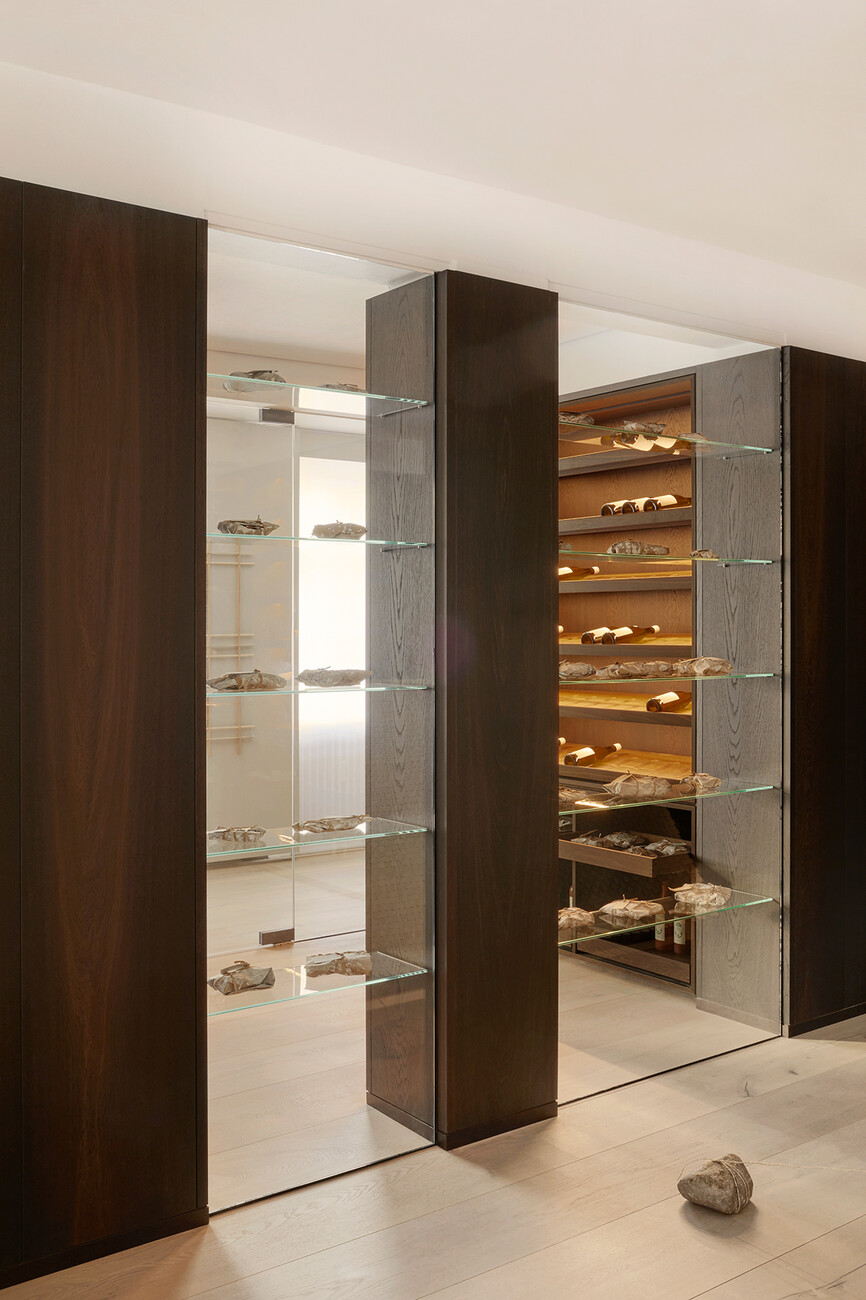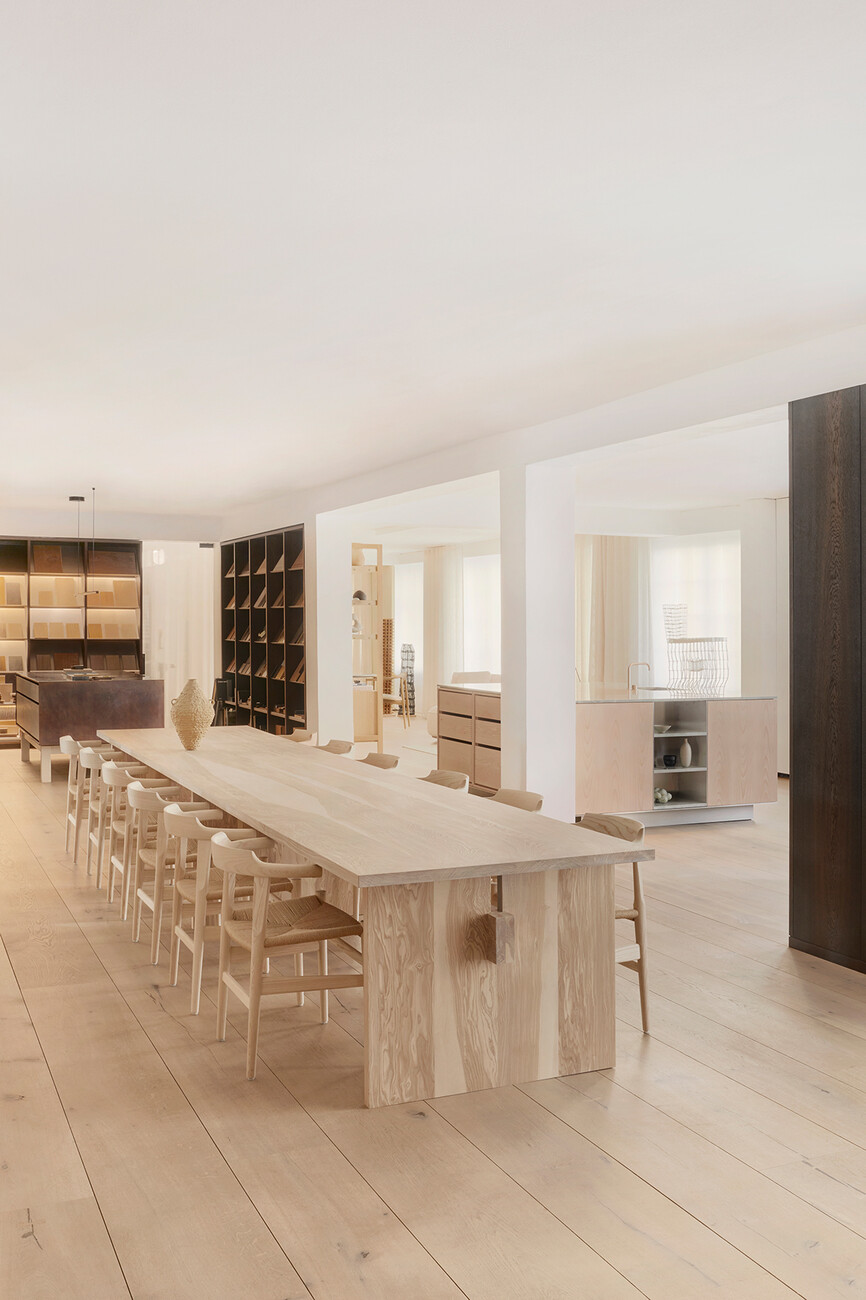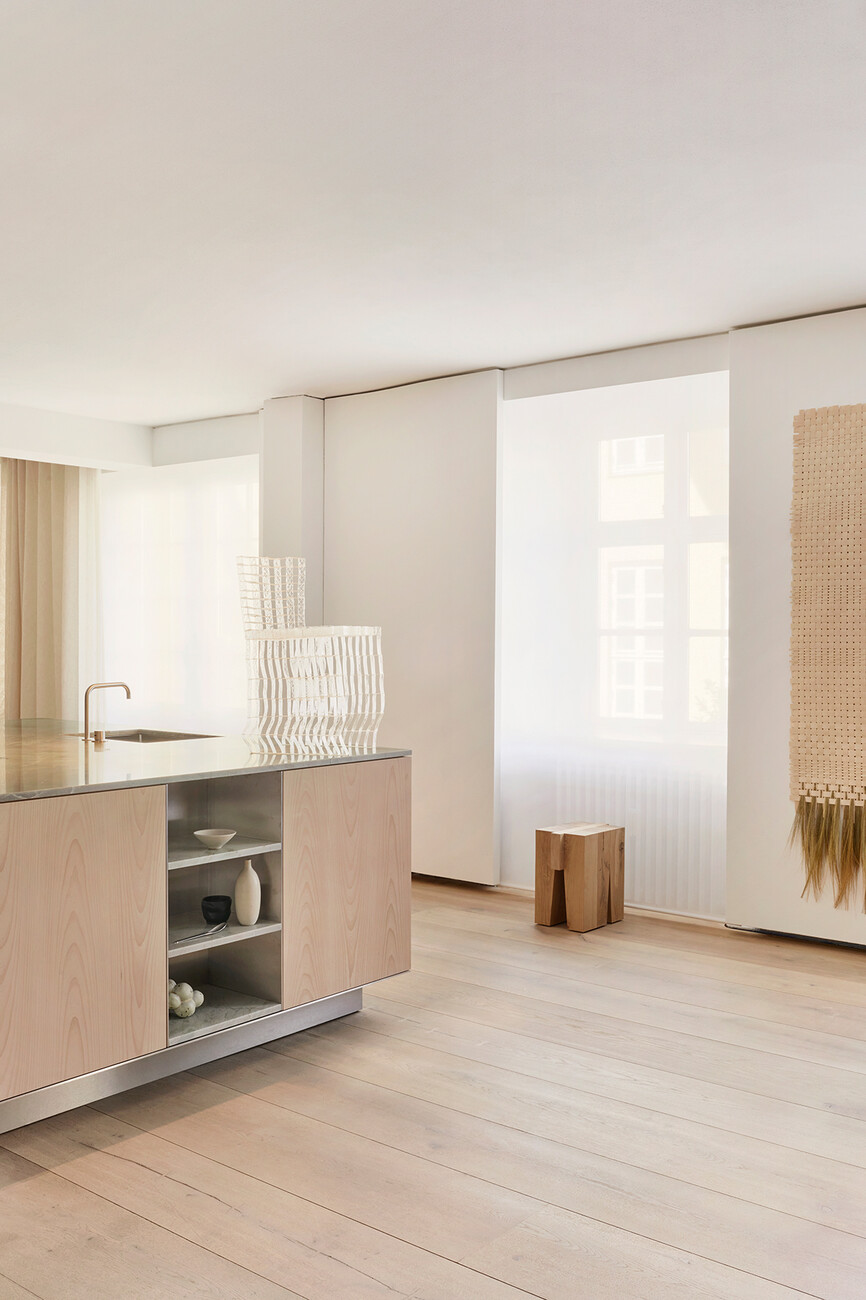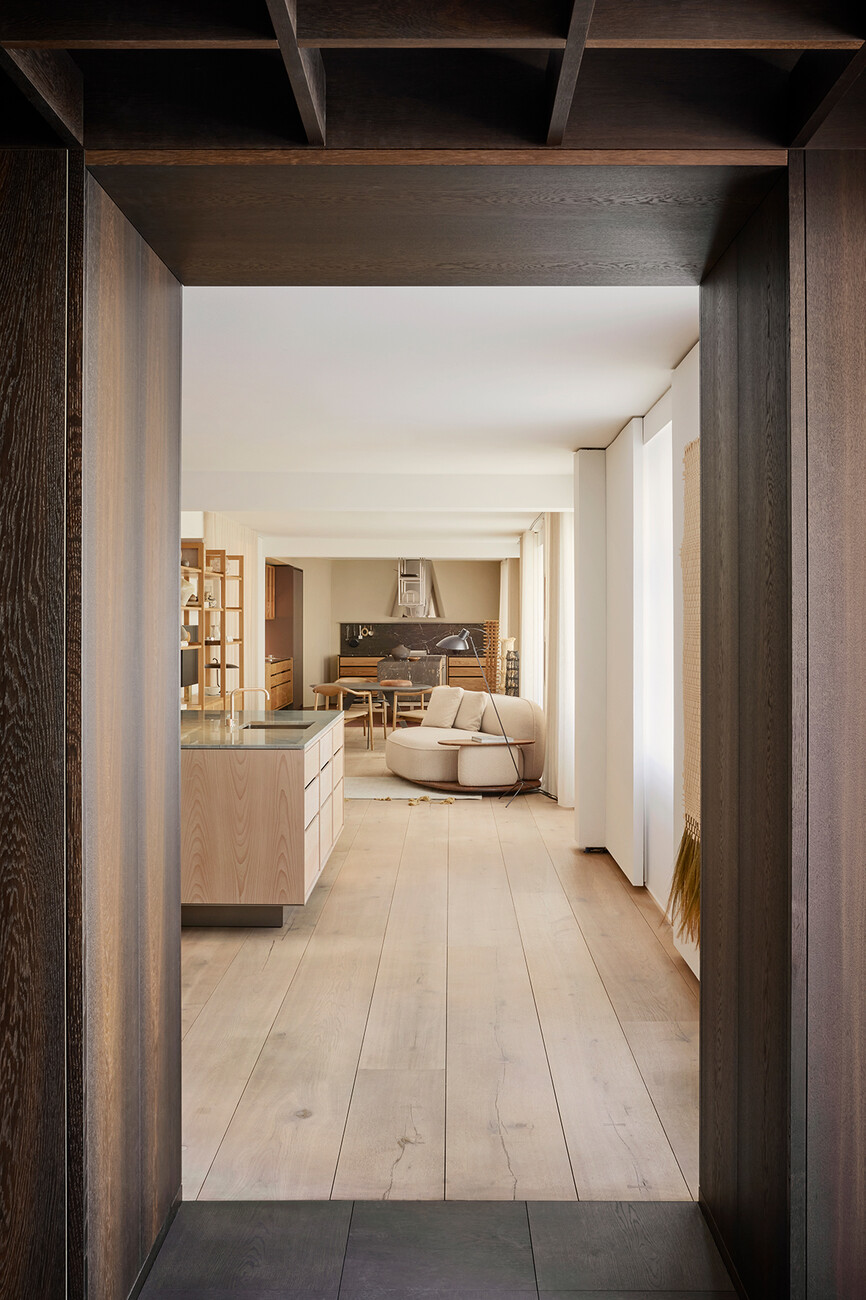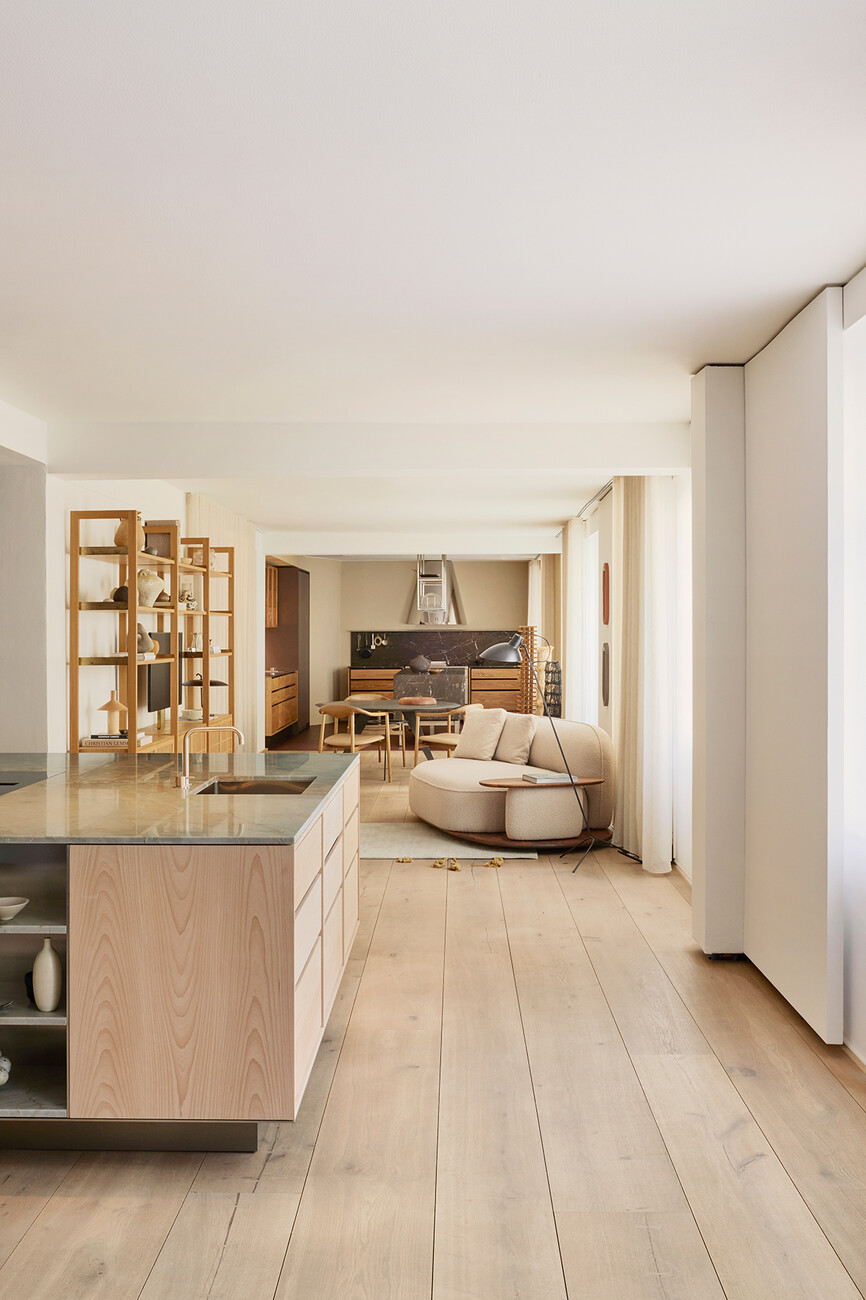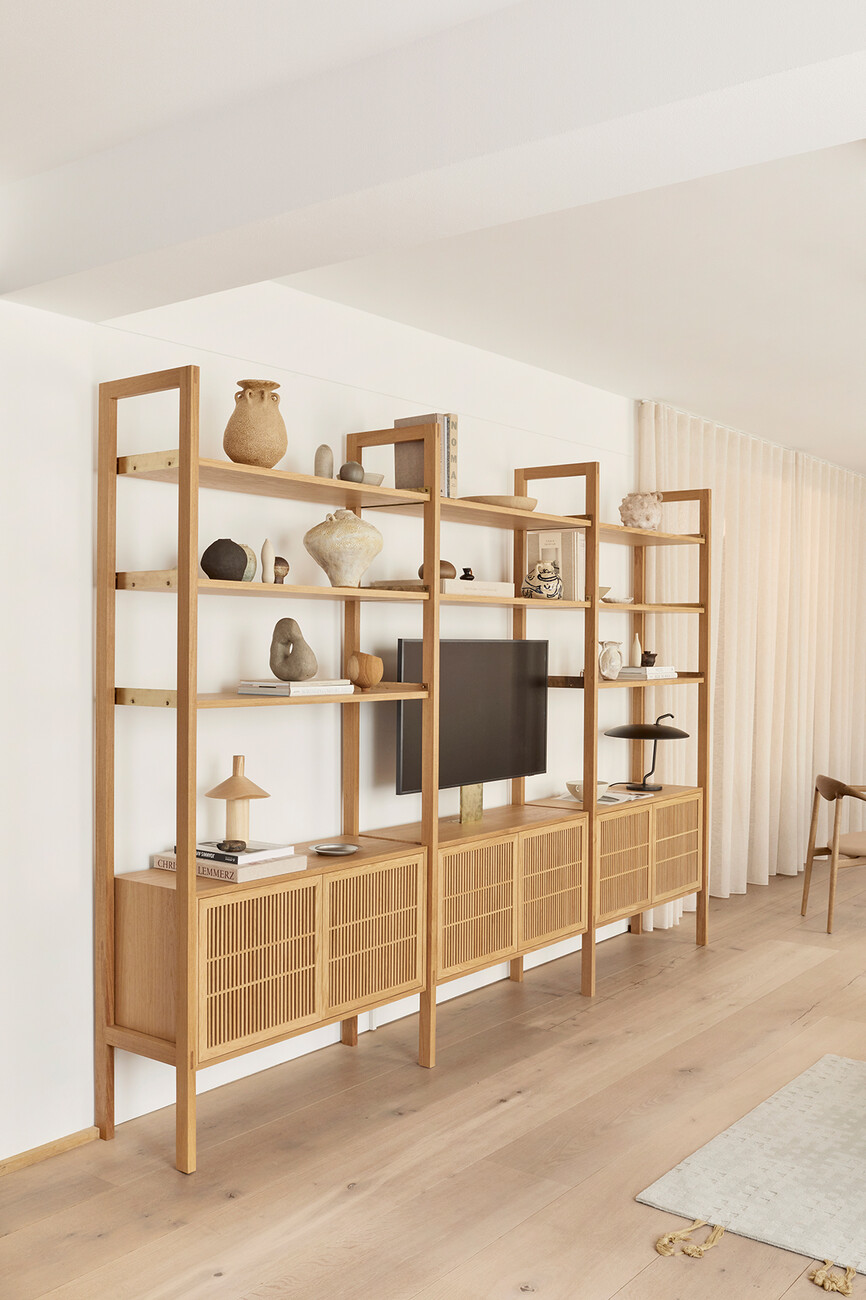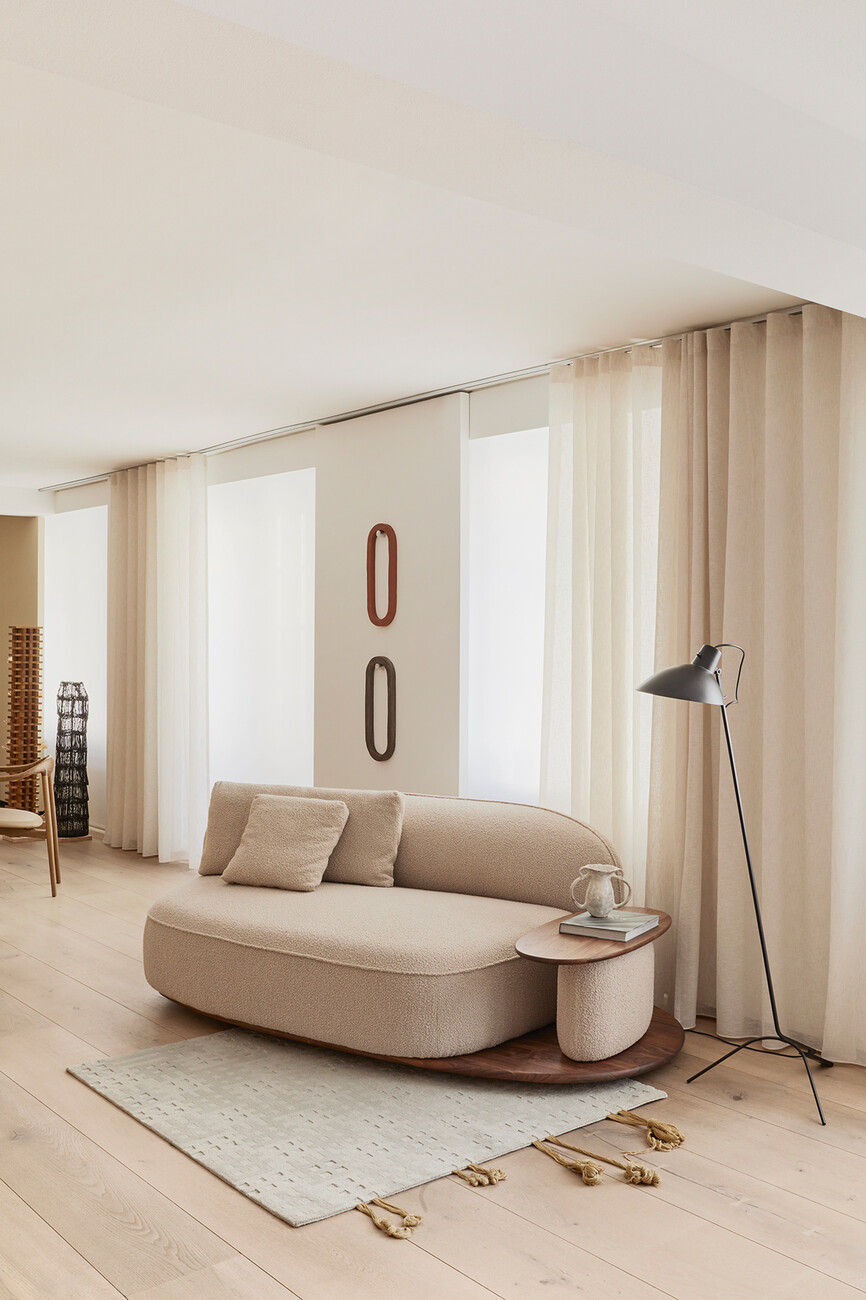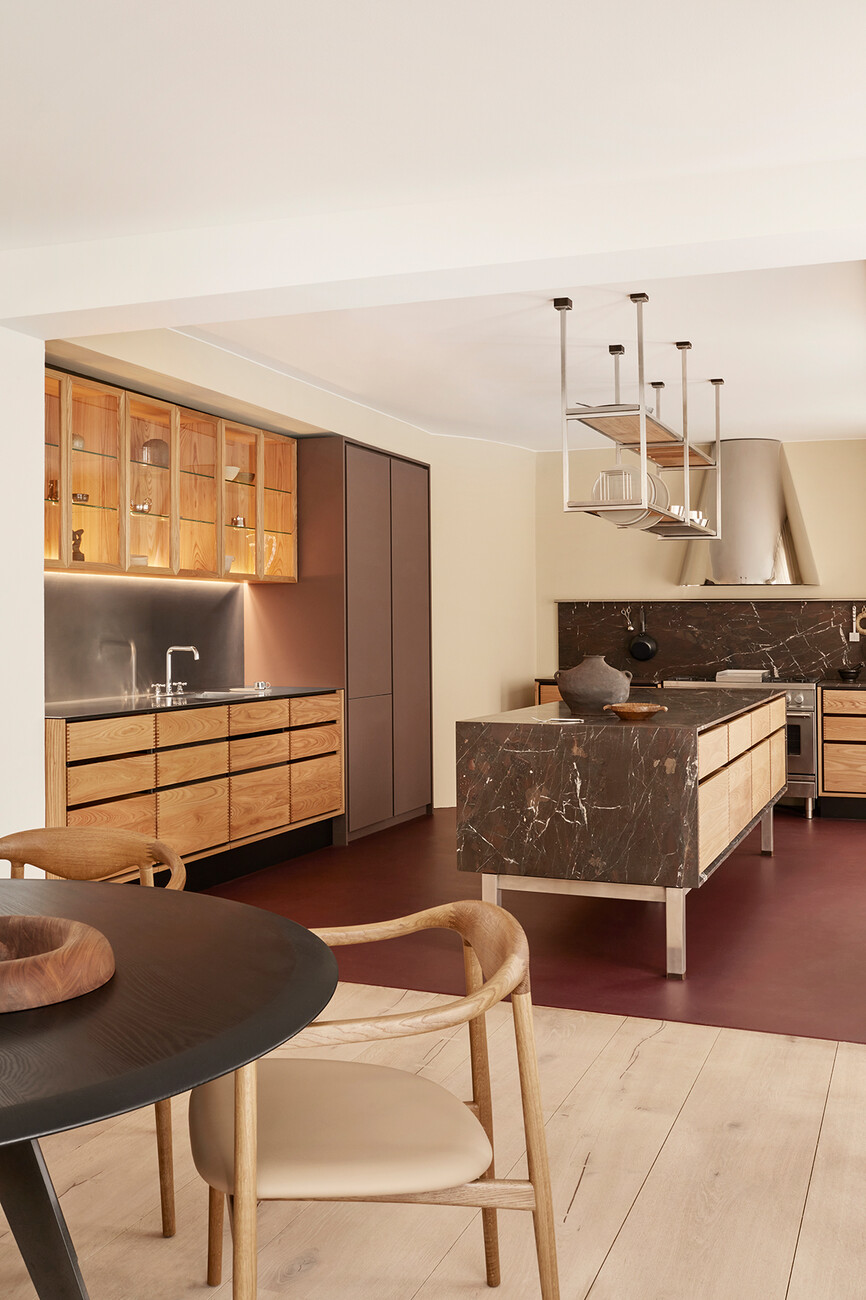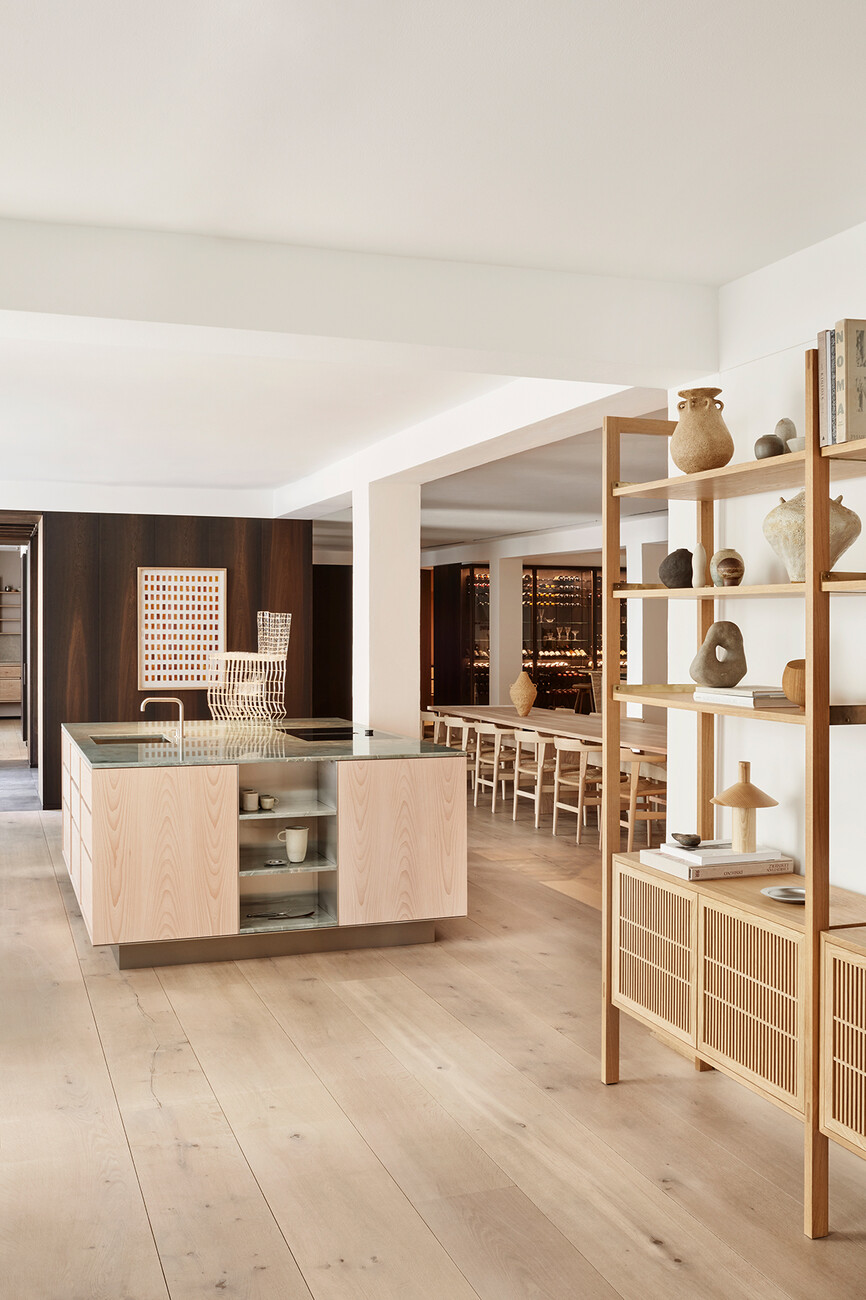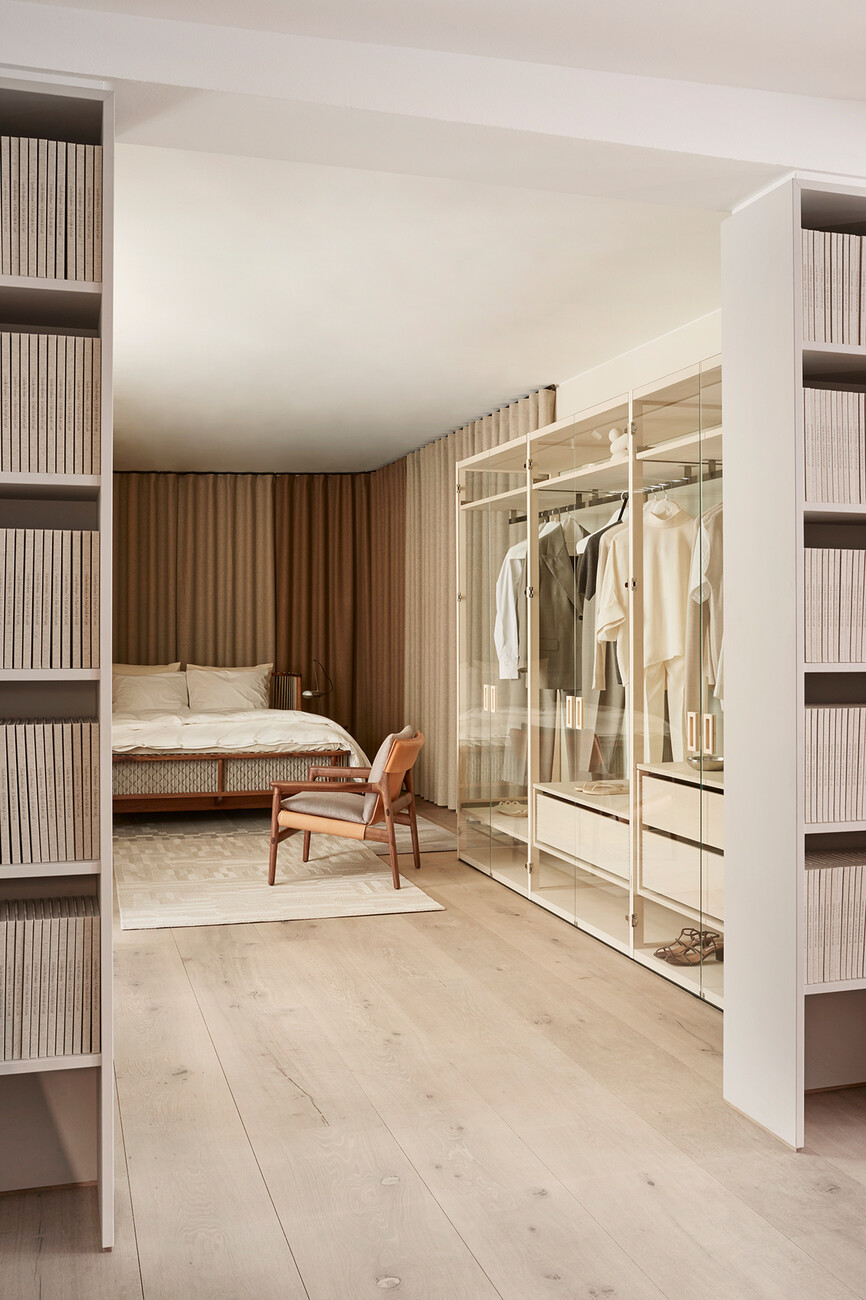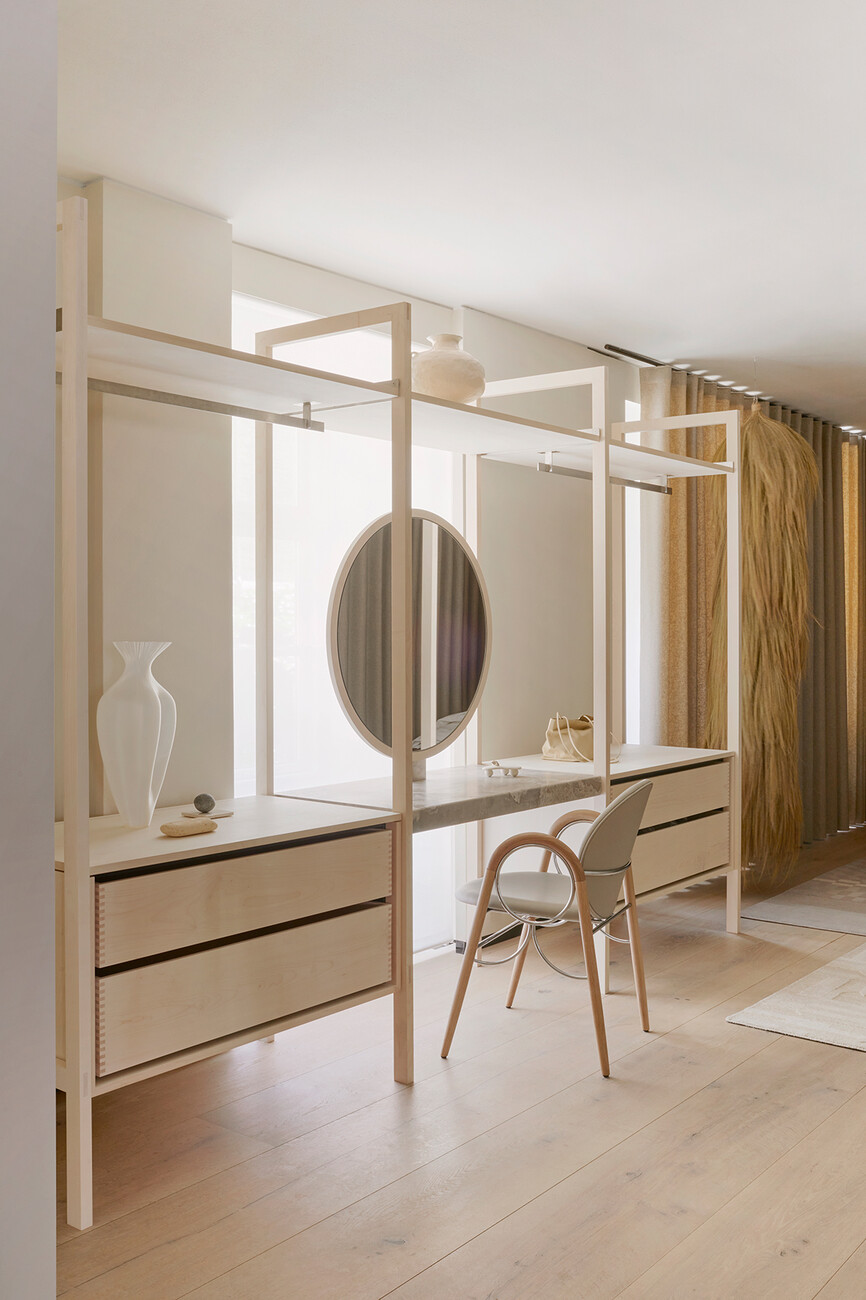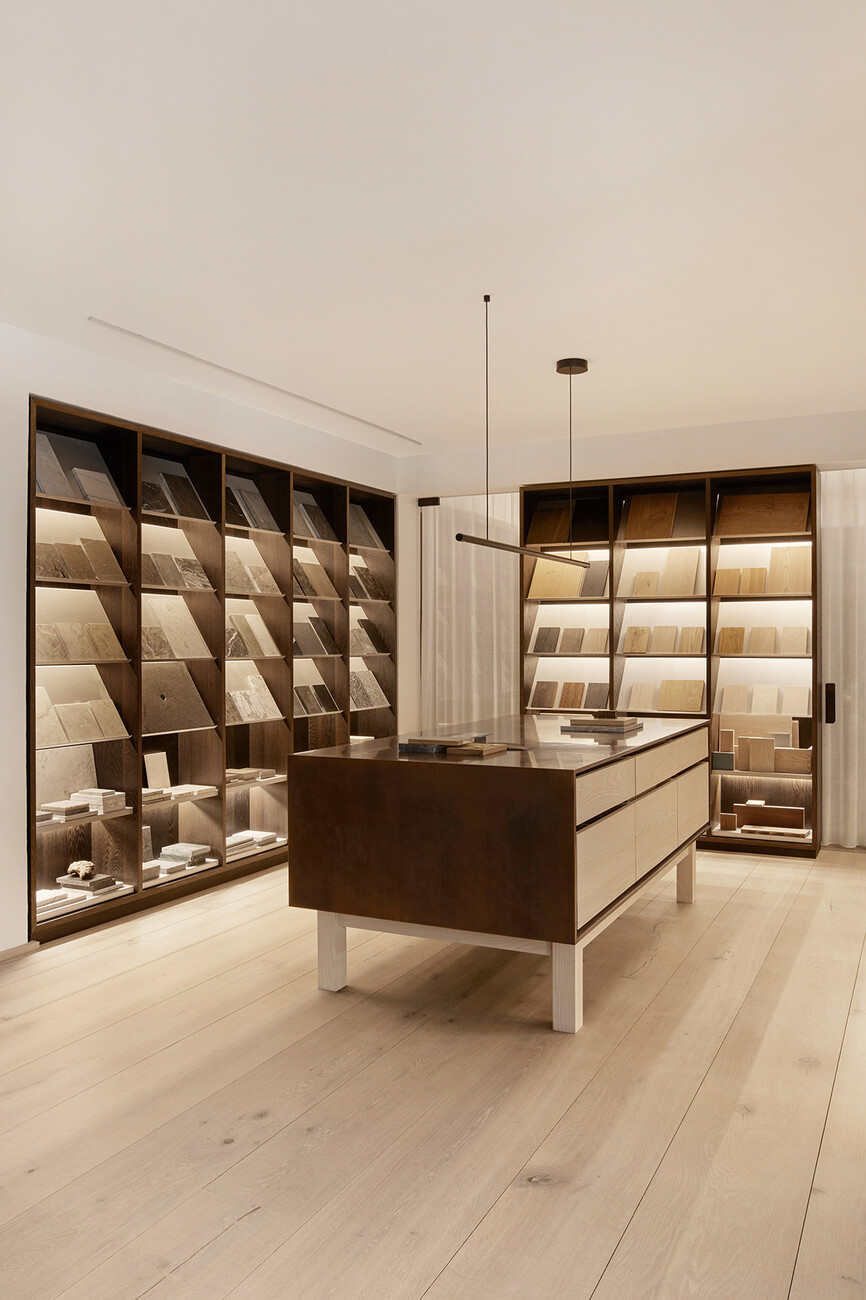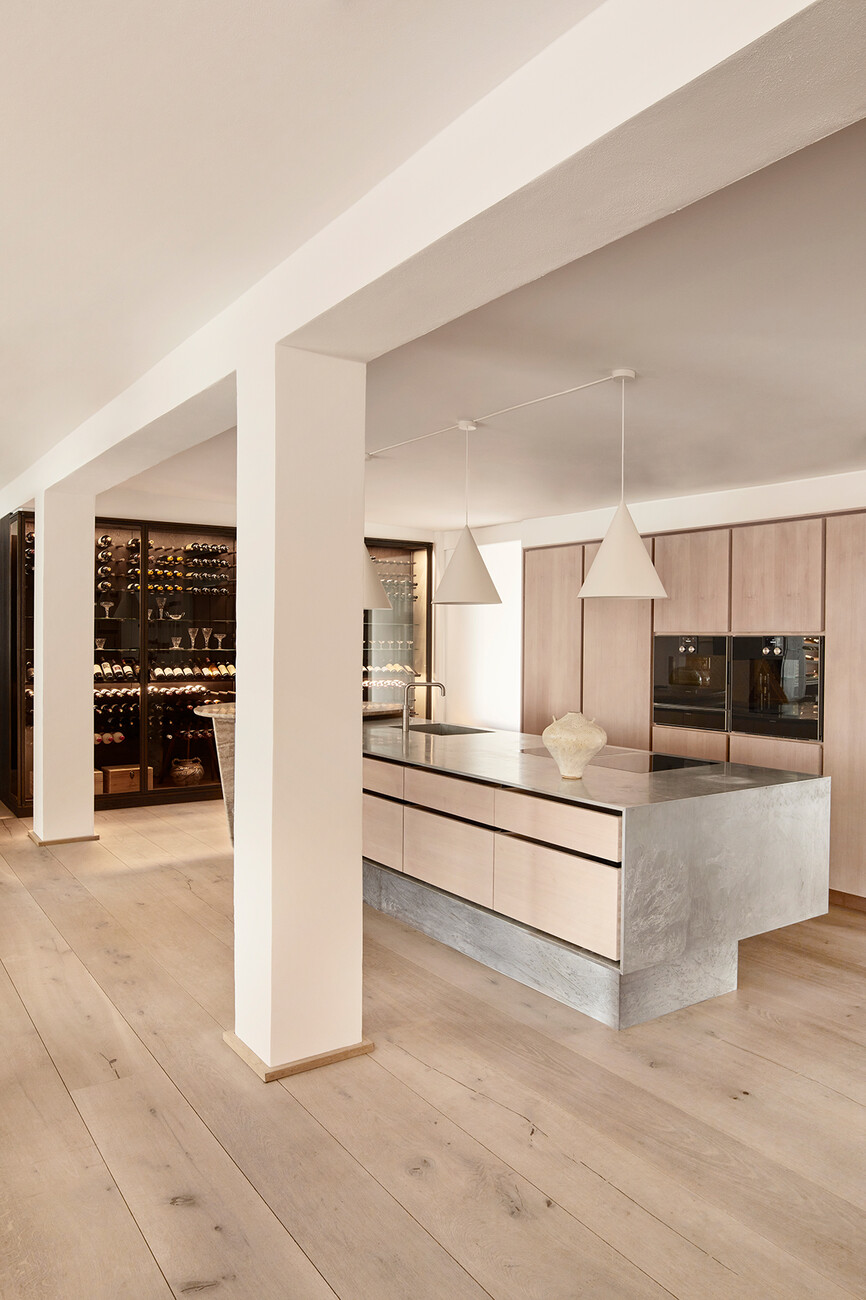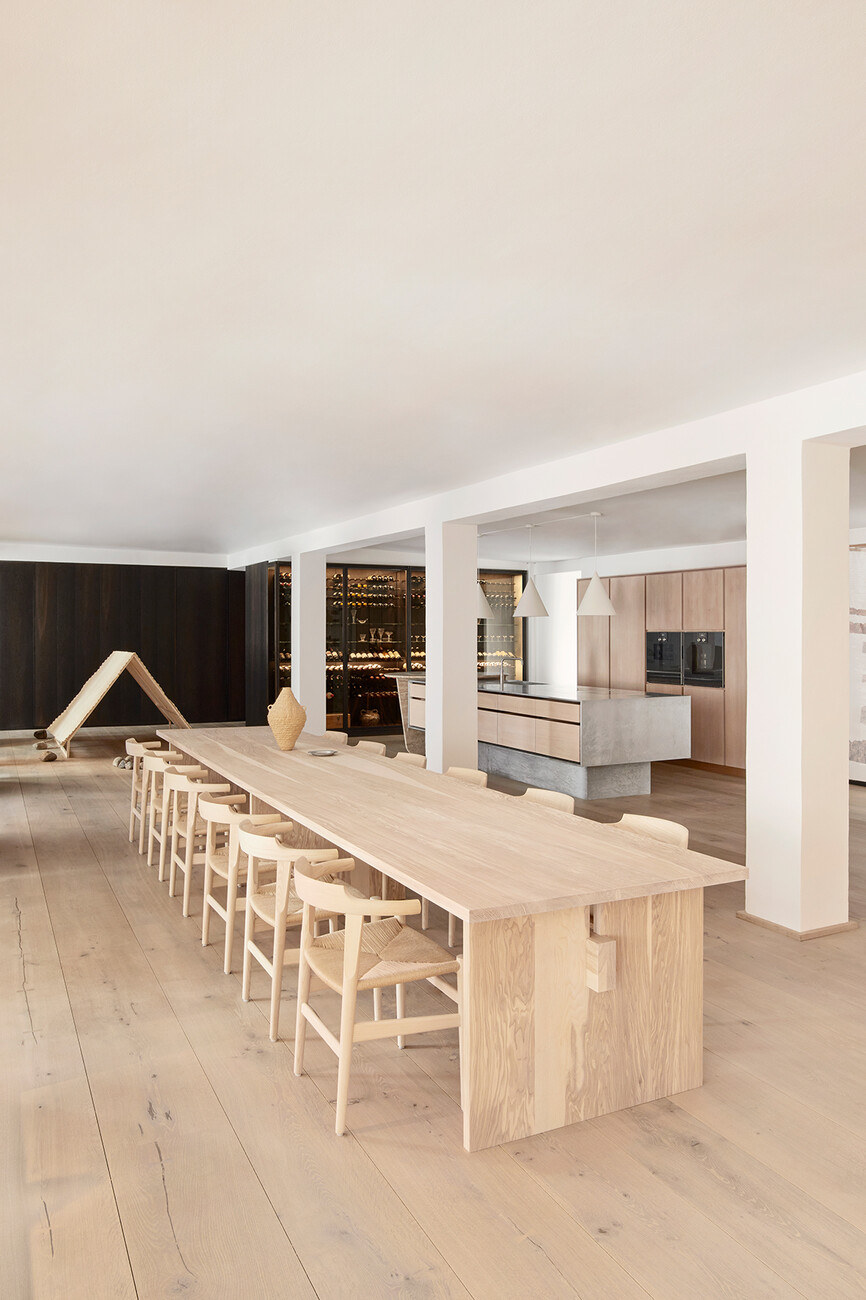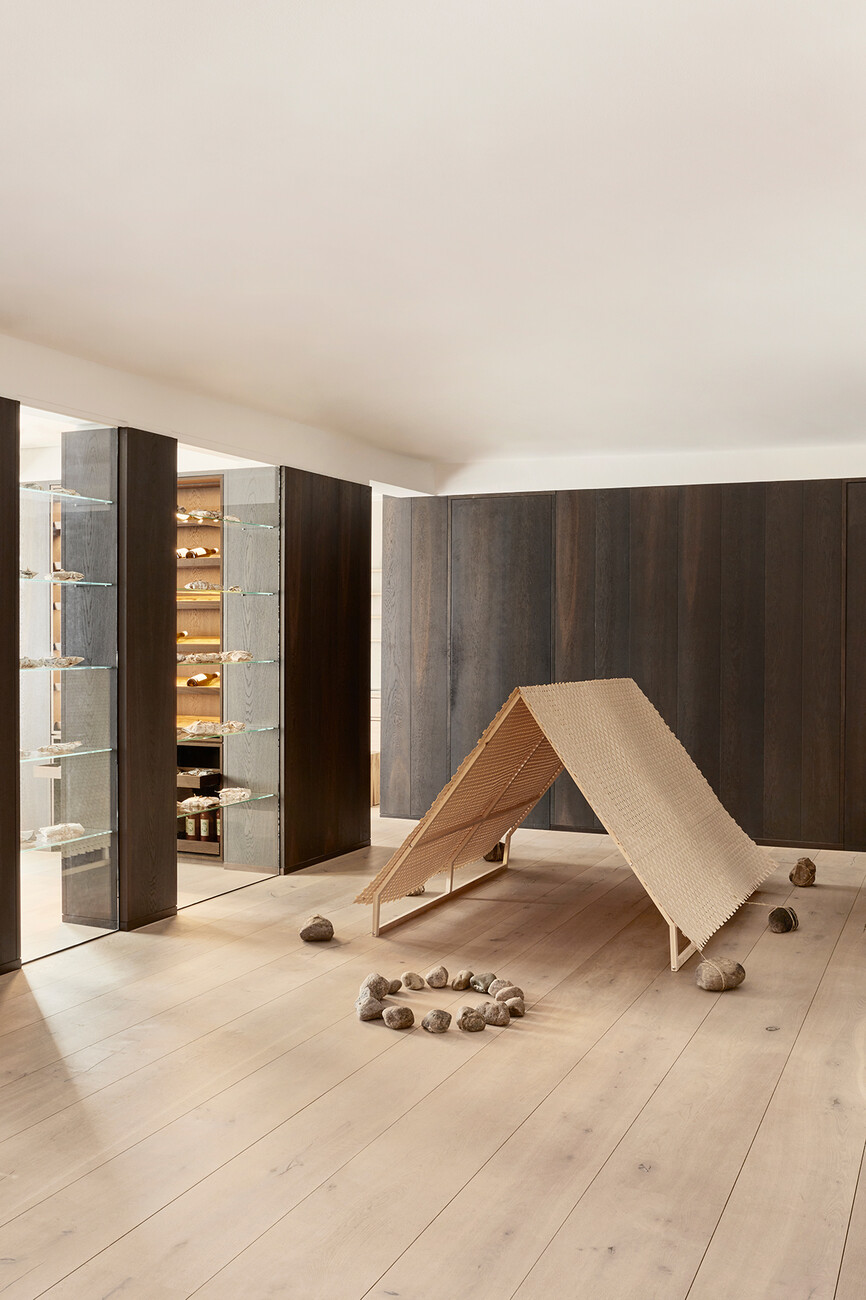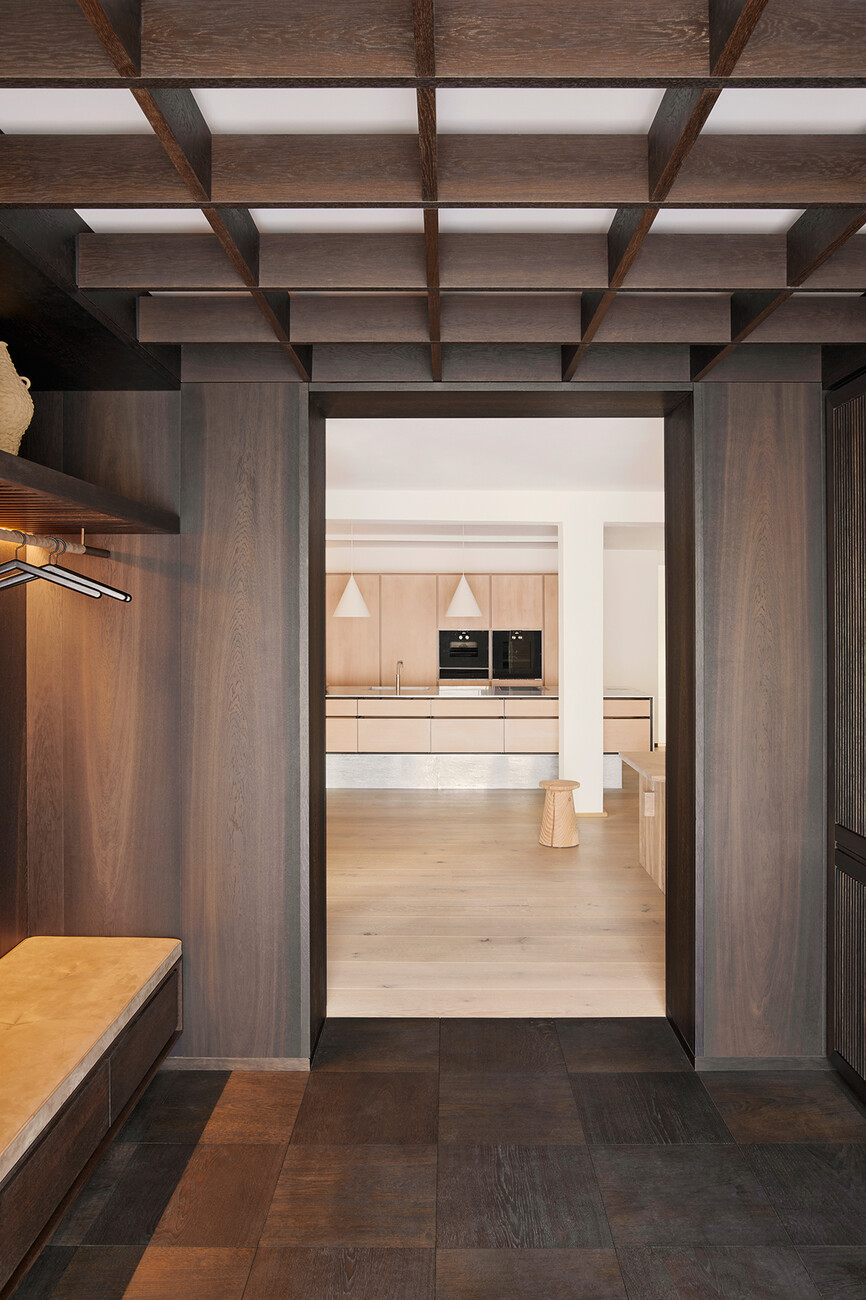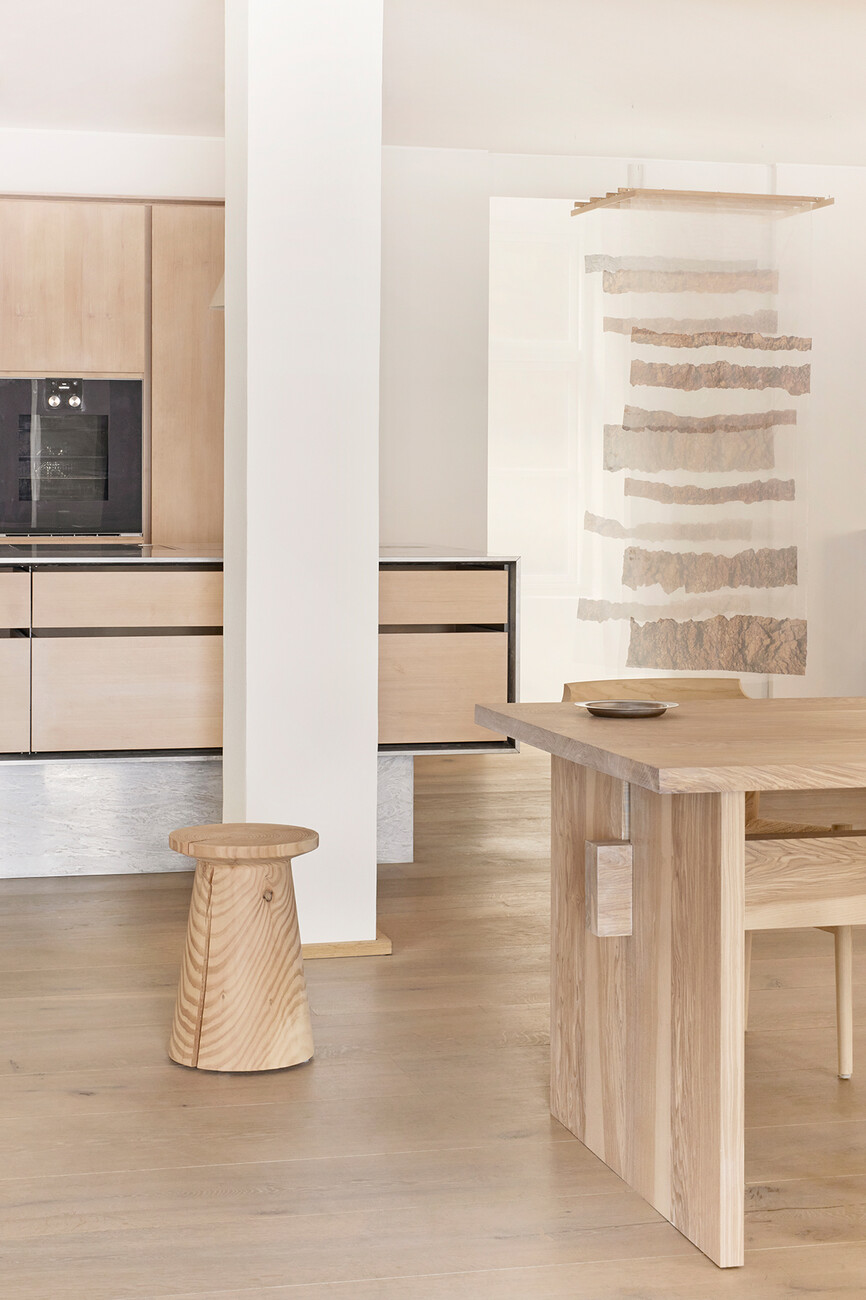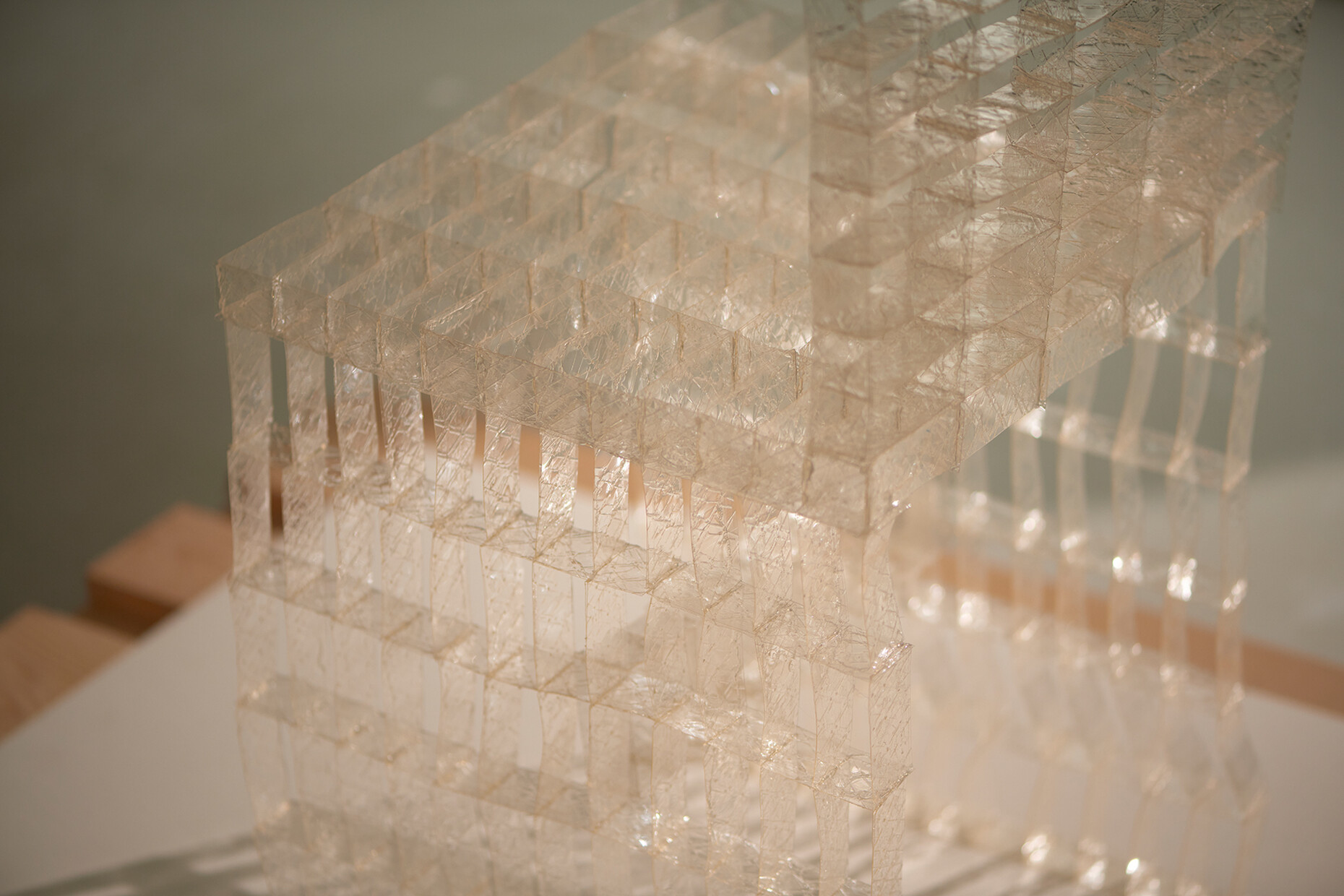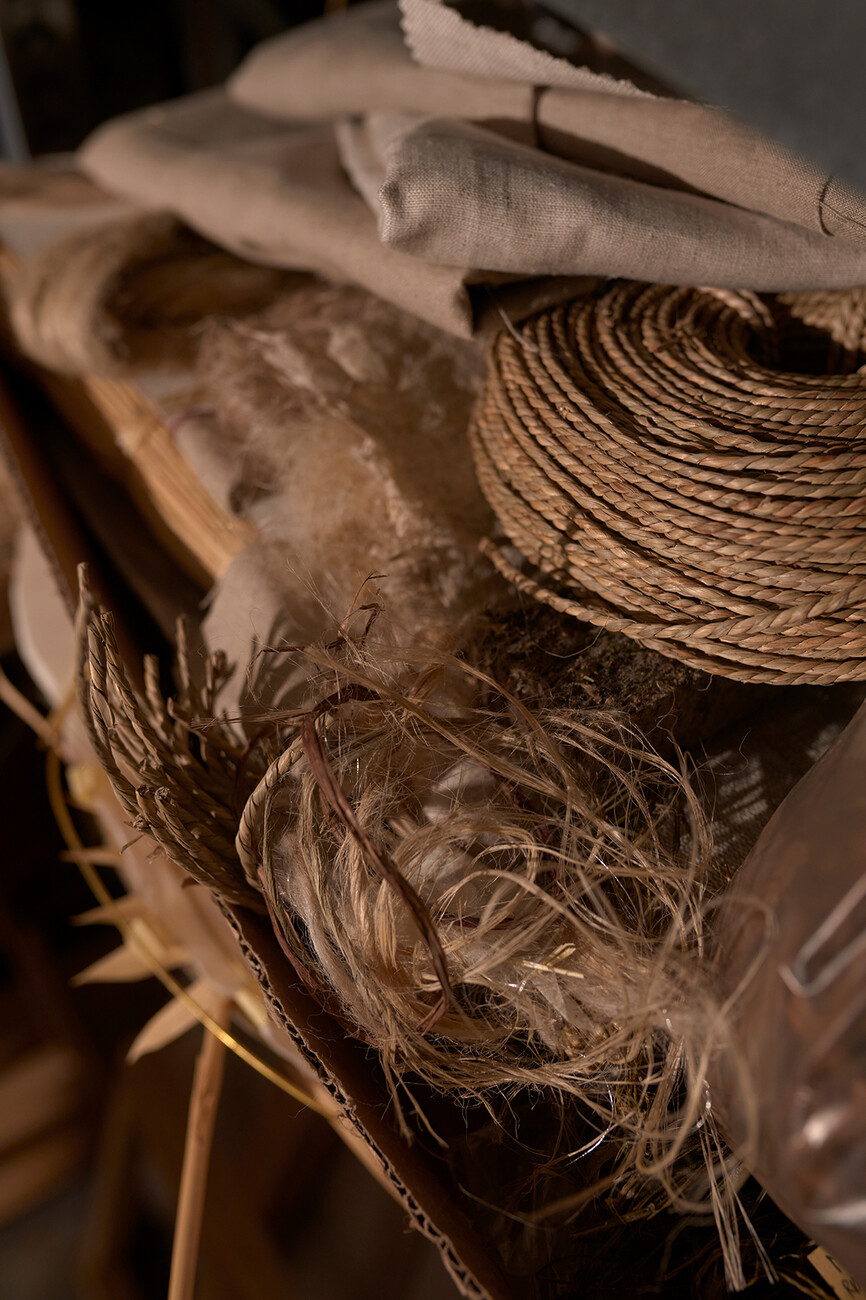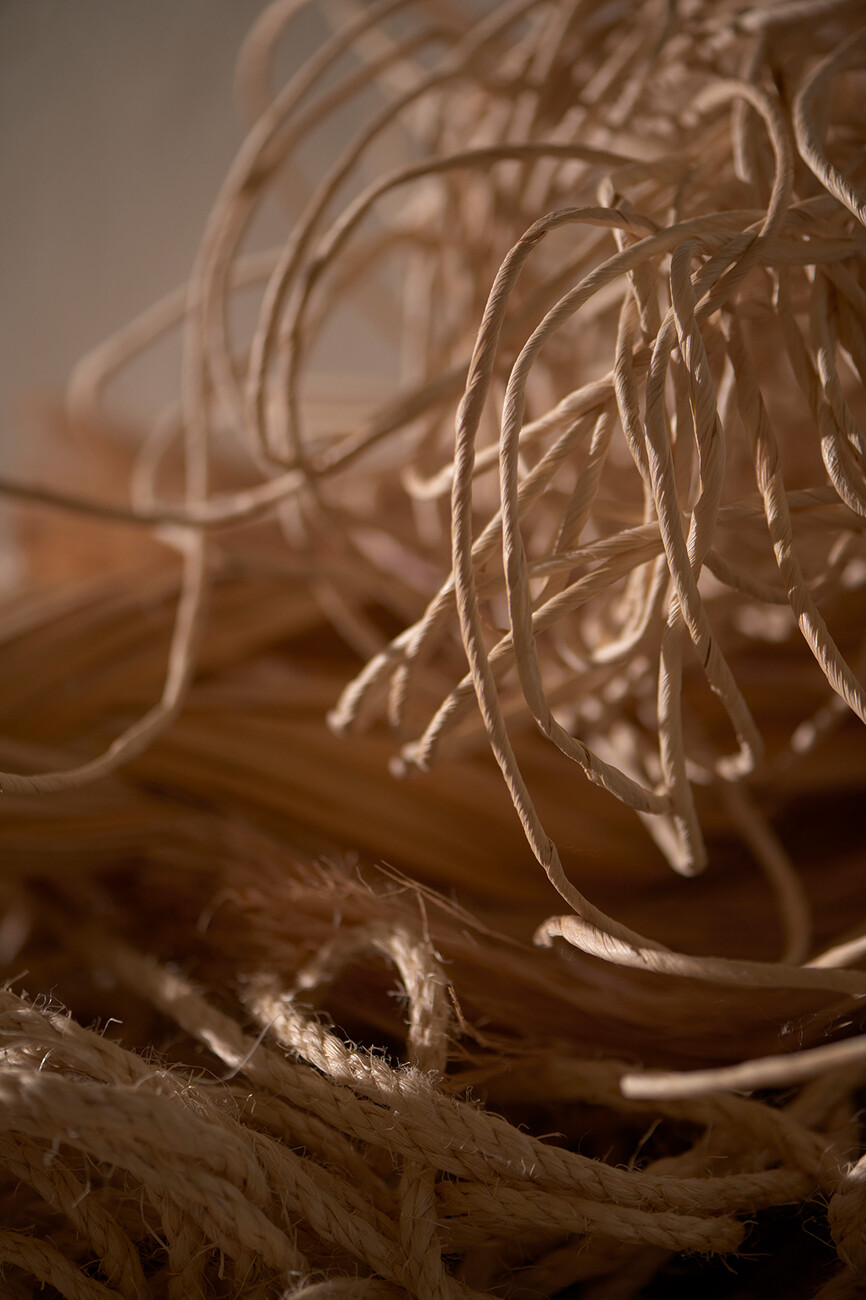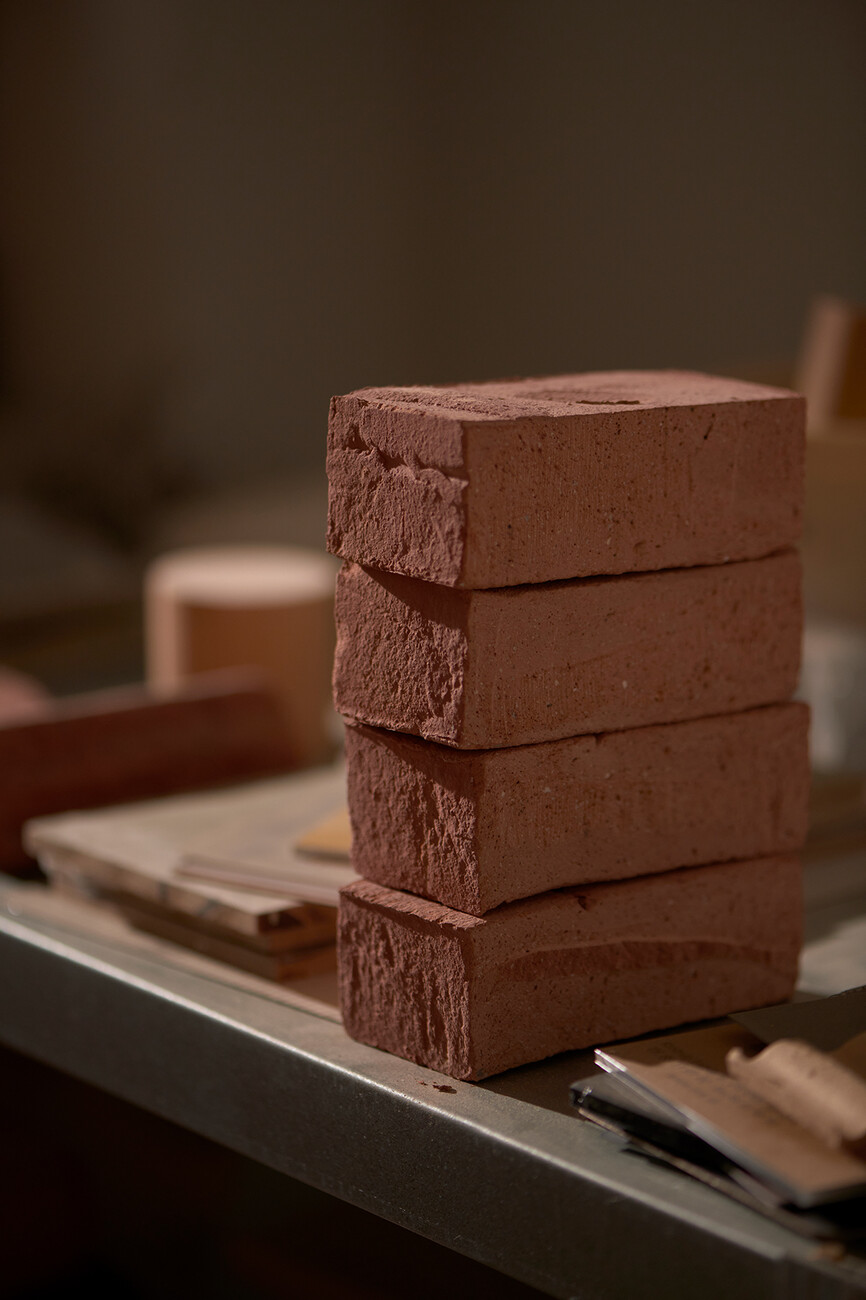The Origin of Things
Anika Paulus: You’re a trained furniture designer now working in the cross field between art and design. Is the furniture designer Sara still visible in your exhibition art pieces?
Sara Martinsen: I have always been very curious about where materials originate from, where they grow and why. I wanted to understand the materials in my hand before processing them. Working with wood as a furniture designer, you need to know the growth times, characteristics, the hard- or softness of different woods. Without that knowledge, your woodwork will not go well. Going into bio-based materials, my material research often led to hands-on experiments that could stand alone as art pieces. The material investigation is a very natural part of my work process, so the difference between design and my artistic work does not feel big. With my artistic work I allow myself to stop somewhere in the creative process where the work still remains research; I am not aiming for a functional end product like a chair or a storage furniture. I like simple construction to enhance the story of the material instead of the shape. This simplicity is also to be found in my art pieces.
There is a poetic beauty in how you treat and work with raw natural materials. Where does this determining affinity come from?
Sara Martinsen: I have always been fascinated with materials. I think most people are as children, but growing up we turn towards other focus points. Most kids collect stones or sticks and bring them home. I still do this. To me a beach stone is granite with a long history and a withered leaf or stick can be turned into something beautiful if repeated in a calm composition. My parents took me to the Kon-Tiki Ra Museum in Norway as a kid. I got a material sample of balsa wood and kept it for many years. I loved to fill the bathroom sink with water and make it float, smell it and feel how light weight but still strong its structure was. Thinking that someone built a boat from this and sailed across the Atlantic Sea fascinated me.
So nature is an integral part of both your work and your life?
Sara Martinsen: Working with natural materials is important to me. Combined with research on evolution, biology, geography and natural history I find myself very content. I think my relation to nature is like many others in the modern Western part of the world. I live in the city of Copenhagen at a high pace with family, work and deadlines – to be in nature is something I need to prioritize and seek out to do. Nature brings a calm contrast to a busy work week and if I don’t have this I feel disconnected.
Your installations and exhibitions seem calm and static at first, drawing visitors closer to have an undisturbed look. Is it in this isolated state and stillness where the character and beauty of the materials unfolds?
Sara Martinsen: It makes me very happy to hear you think of my work this way. Using my craft skills to catch people's attention, I have a brief window to give them an experience with the materials up close. With a calm composition, a rhythm in a pattern or an added texture I show that a very simple or even banal material like ash veneer, grass or soil can be turned into something aesthetic and relevant. Nature is, unlike us humans, very patient. I like my work to express calmness, too.
The "Protein Chair" particularly attracts the attention of the audience. It is difficult to understand it without touching it - for example, the question immediately arises whether the material is hard or soft, stable or fragile.
Sara Martinsen: Yes, you immediately want to touch and understand the material better when you look at the Protein Chair. The material is gelatin made from animal protein like bones. This is from a time where we would utilize everything of the animal when cooking, not just parts of it. Today, gelatin is a highly industrialized product. To me the sheets of gelatin almost look like thin layers of protection glass. I wanted to explore this kind of material and if it would result in an interesting look and feel. I think it did. It has a very elegant expression and it reflects the light in a beautiful way. At the same time it looks like something that could vanish in a split second. And it really could, if you poured hot water on it.
Is this sensual experience of your pieces important to share knowledge and tell the stories of the materials you use?
Sara Martinsen: Our sensory apparatus is how we navigate. It sends us signals we can either ignore or need to accept and appreciate. I believe that in our current modern lives many of us feel like our senses are asleep. Our food is designed with a perfect balance of flavors and textures like salt, sweet, bitter, crispy, soft and sour. It is our watch that tells us when our pulse is too high or low, or when it is time to eat or relax. Yet our senses help us to 'listen', and this is an important part of being a creature. If we do not use this 'muscle' we can’t feel ourselves. If I create something people feel inspired to see, touch or smell, they appreciate what the material gives them. And when you appreciate something you tend to take good care of it, not just throw it out and buy new stuff that doesn't affect you. The exhibition at Garde Hvalsøe honors the elements and acknowledges our need to experience and sense the unprocessed.
”With a longer distance to all raw materials, farming, processing and production we no longer face how our behavior impacts our surroundings.“
"The Origin of Things" is a very substantial, all embracing exhibition title. Do you believe that everything we are, comes from nature?
Sara Martinsen: Absolutely. I love to track it all back to the basics, including our own existence originating from bacteria. We are connected and a part of nature. Humans and nature sometimes seem like two different systems, but this is not the case. We are part of the same. When investigating materials I spend a lot of time reading about their origin and natural history. The piece called 'Tale Of Grass’ was exhibited before with a hidden motor to make it shiver. To tell the story of goosebumps. To get the shivers is a natural instinct we kept. When we were animals we used it to insulate the outer layer of our skin by raising the fur, allowing air to fill between the hairs. Or to appear bigger in size when met with danger in nature. As a modern human being today we do not really need this instinct anymore, but we still have it; it helps us register when we feel cold or have strong emotions. Information like this adds an extra layer to better understand ourselves and what we originate from.
Do you believe that if humans reconnect with nature and the materials we are surrounded with, the world would be a different place?
Sara Martinsen: Oh yes. Very much indeed. It is in our DNA that we need to have things up close in order to relate to them; people, situations, consumer behavior and the decisions we make or things we opt out of. With a longer distance to all raw materials, farming, processing and production we no longer face how our behavior impacts our surroundings. We are not able to take good care of things. There has been a massive loss of material knowledge over the last decades. If you do not know that your candlelight holder in white carrara marble originates from a material more than 140 millions years old, or your oak furniture is made from a tree growing for about 100 years before cut down and turned into a product, you can not relate to the time invested and therefore will not take good care of it. The connection to nature and the closer distance is a vital factor in our well being and in creating a relation to the ground we stand on.
